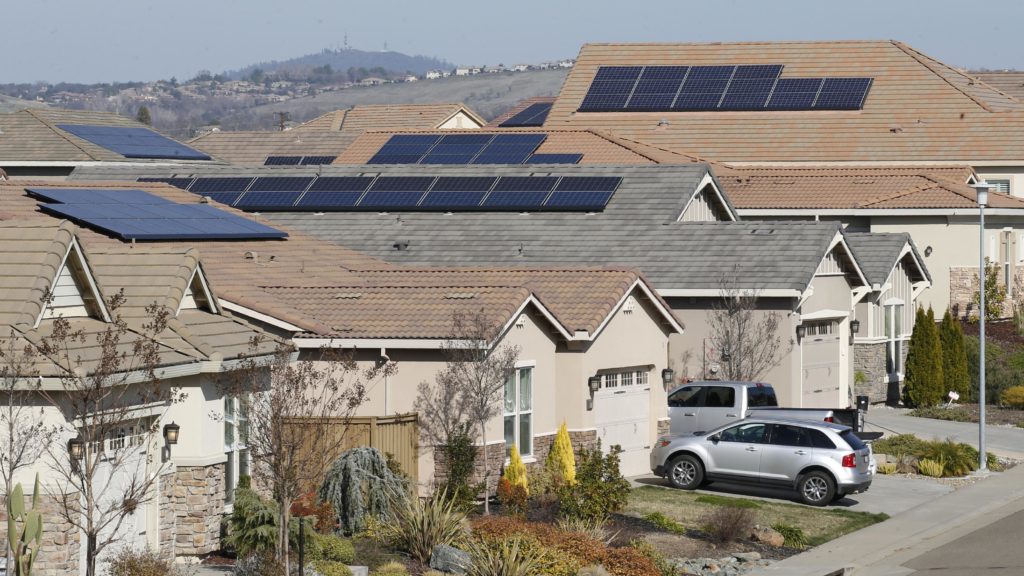— California’s 26-year-old program to get more people to put solar panels on their homes has been wildly successful, but state regulators may lower the incentives for people to go solar in a bid to reduce electricity bills for the rest of residents in the most populous U.S.
Current incentives allow residential solar customers to sell whatever energy they don’t use back to power companies at the retail rate for power, usually resulting in a big discount on their energy bills.
Regulators at the California Public Utilities Commission, which oversees the state’s major utilities and the rates they can set, are expected to issue proposed reforms on Monday.
California now has more than 1.3 million residential solar installations, more than any other state, according to the solar industry.
The major utility companies — Pacific Gas & Electric, San Diego Gas & Electric and Southern California Edison — say the current setup allows solar customers to sell their energy back into the grid for more than it’s worth.
When solar households pay significantly lower electricity bills — or no bills at all — they’re contributing less to those things.
The California Public Utilities Commission began a process for reforming the program last year with an eye toward ensuring energy grid maintenance costs are spread equitably and making it easier for residents of all backgrounds to purchase solar panels.
There are a wide array of opinions on potential reforms — 18 groups including the solar industry, the utilities, ratepayer advocates and environmental groups submitted proposals to state regulators.
The solar industry warns a dramatic decrease in financial incentives would entice fewer people to add solar panels to their homes, jeopardizing the market and hurting the state’s ability to reach its clean energy goals.
Solar panels on average cost between $20,000 and $25,000 to install on a California home, said Bernadette Del Chiaro, executive director at the California Solar and Storage Association, which represents 700 businesses involved in the solar market.
The utilities have proposed lowering the amount of money solar customers get back, meaning it would take longer — 11 to 15 years — for homeowners to recover their costs.
The Utility Reform Network, a consumer advocacy group that’s often fighting with the utilities over rates, also wants to lower what households with solar panels are paid back for excess energy.
Del Chiaro said the state should also be making it easier for people to buy solar storage systems alongside the panels.
As more people build storage systems, the utilities will need to spend less on new power plants or transmission lines, she said.
